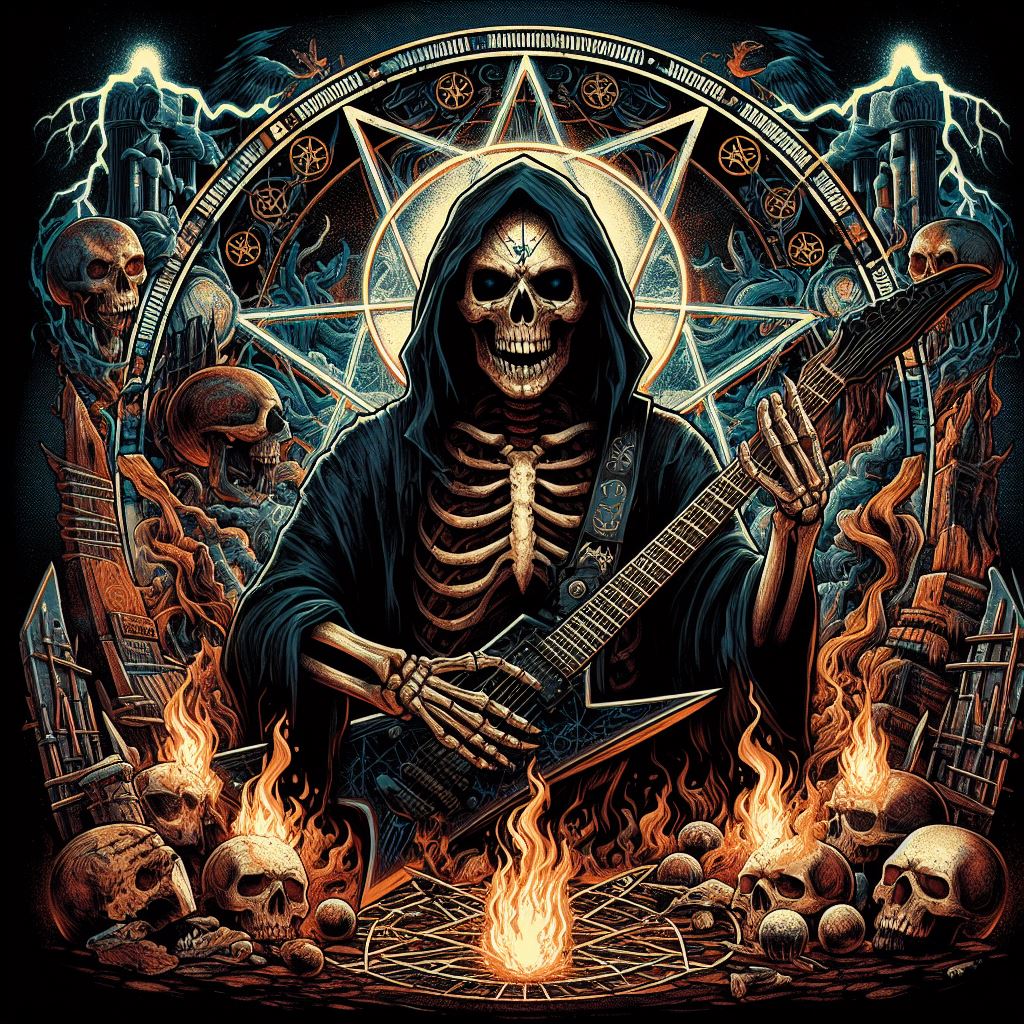Children of Bodom, the Finnish melodic death metal band, carved a unique path in the metal scene. Their sound, a blend of brutal death metal riffs and soaring keyboard melodies, captivated audiences worldwide. This article explores their journey, from their early thrash roots to becoming one of the most successful metal bands of their generation.
Early Days as Inearthed (1993-1996)
The story begins in 1993, in the Finnish city of Espoo. Childhood friends Alexi Laiho (guitars and vocals) and Jaska Raatikainen (drums) shared a passion for heavy metal, particularly death metal and classic metal giants. They formed a band called Inearthed, joined by bassist Samuli Miettinen. Their sound leaned heavily towards the brutal side, influenced by bands like Cannibal Corpse and Obituary.
Inearthed recorded their first demo, “Implosion of Heaven,” showcasing their raw talent and aggression. However, Miettinen’s departure and the desire to incorporate keyboards led to a shift in direction.
Birth of Children of Bodom and the Rise of Melodic Death Metal (1997-2003)
In 1997, the band changed their name to Children of Bodom, inspired by the infamous Lake Bodom murders in Finland. Keyboardist Janne Wirman joined, and bassist Henkka Seppälä (later known as Henkka T. Blacksmith) completed the lineup. This new formation laid the groundwork for their signature sound.
Their debut album, “Something Wild,” released in 1997, showcased their melodic death metal approach. Brutal death metal riffs interlaced with soaring keyboard melodies, complimented by Alexi Laiho’s distinctive vocals and shredding guitar work. Tracks like “Deadnight Warriors” and “In the Shadows” became fan favorites.
The following years saw a string of successful albums, solidifying their place in the metal scene. “Hatebreeder” (1999) boasted a more polished production while retaining their trademark aggression. “Follow the Reaper” (2000) marked a turning point, achieving gold certification in Finland and featuring their iconic title track, a gateway for many new fans.
“Hate Crew Deathroll” (2003) continued their momentum, showcasing their ability to balance brutality with catchy melodies. This period cemented Children of Bodom’s reputation as one of the leading forces in melodic death metal.
Commercial Success and Evolution (2005-2015)
The band continued to evolve with each album. “Are You Dead Yet?” (2005) experimented with a cleaner sound, incorporating more prominent clean vocals. “Blooddrunk” (2008) further explored this direction, showcasing a more accessible approach while retaining their metal roots.
“Skeletons in the Closet” (2009) was a collection of re-recorded songs from their early Inearthed days, offering a glimpse into their formative years. “Relentless Reckless Forever” (2011) marked a return to a heavier sound, while “Halo of Blood” (2013) continued their exploration of melodic metal with modern production techniques.
Later Years and Disbanding (2015-2019)
“I Worship Chaos” (2015) saw the departure of longtime guitarist Roope Latvala, replaced by Daniel Freyberg. Their final album, “Hexed,” released in 2019, displayed a renewed energy and showcased Laiho’s ever-evolving guitar work.
Sadly, in 2019, Children of Bodom announced their disbandment due to internal conflicts. The news came as a shock to fans worldwide, leaving a void in the metal scene.
Legacy of Children of Bodom
Children of Bodom’s legacy is undeniable. They were instrumental in popularizing melodic death metal, bringing the genre to a wider audience. Their music continues to inspire a new generation of musicians. Alexi Laiho, the band’s frontman and driving force, tragically passed away in 2020, leaving a lasting impact on the metal world.
Children of Bodom’s music transcended genres. They seamlessly blended aggression with melody, crafting anthems that resonated with metalheads and casual listeners alike. Their influence continues to be felt in the metal scene, and their music will undoubtedly continue to be enjoyed for years to come.

Leave a Reply
You must be logged in to post a comment.